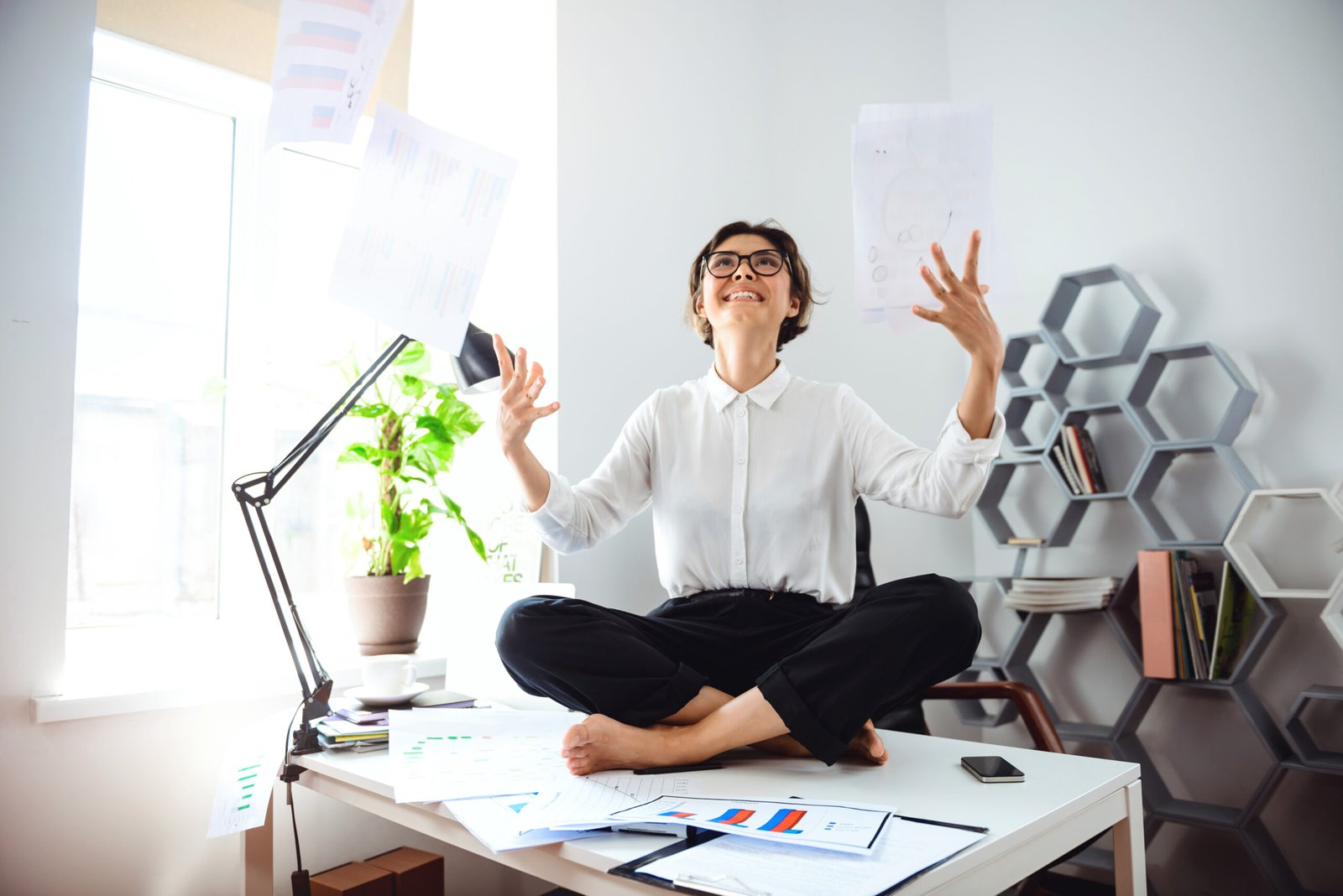Yoga for the Workplace
Introduction:
In the contemporary corporate landscape, where the demands of work can be ceaseless, stress and burnout have become all too familiar. Companies are increasingly recognizing the significance of employee well-being and turning to innovative solutions such as yoga to bolster corporate wellness. In this article, we will delve into the advantages of incorporating yoga into the workplace as a means to alleviate stress and amplify productivity.
The Stress Epidemic in the Workplace:
Stress has become a pervasive issue in the corporate arena, stemming from heavy workloads, stringent deadlines, extended working hours, and the unending pursuit of competitiveness. The ramifications of unchecked stress are substantial, affecting both physical and mental health. High stress levels often lead to reduced job satisfaction, diminished productivity, and an increase in absenteeism.
This stress epidemic in the corporate sphere is characterized by several disconcerting trends:
- Skyrocketing Burnout Rates:
- Implications on Health:
- Erosion of Job Satisfaction:
- Diminished Productivity:
- Upward Spiral of Absenteeism:
- Strained Interpersonal Dynamics:
- Heightened Employee Turnover:
- Inhibition of Innovation:
Yoga: A Holistic Solution:
Yoga is a holistic discipline that unifies the body, mind, and breath. It offers an effective and accessible remedy to combat stress and enhance overall well-being. When introduced into the corporate environment, yoga becomes a potent tool for enhancing employee health and elevating job satisfaction.
Benefits of Yoga for the Workplace:
- Stress Reduction:Yoga underscores relaxation techniques, controlled breathing, and mindfulness. Regular practice empowers employees to manage stress and anxiety, fostering a tranquil and more focused work environment.
- Enhanced Physical Health:Yoga asanas (poses) foster physical fitness, flexibility, and strength. This, in turn, helps alleviate the physical symptoms of stress, such as muscle tension, headaches, and discomfort.
- Augmented Mental Clarity: Yoga encourages mental clarity and concentration, thereby sharpening decision-making and promoting creativity among employees.
- Elevated Productivity:As stress levels recede and physical and mental health is optimized, employees become more engaged and productive. They are less susceptible to burnout and more motivated to execute tasks efficiently.
- Cultivating Team Cohesion:Group yoga sessions cultivate a sense of community and camaraderie among employees, which, in turn, fosters stronger workplace relationships and teamwork.
- Preventative Health Measures:Yoga serves as a proactive measure against chronic health conditions such as hypertension, heart disease, and diabetes, all of which are often linked to stress.
- Cost Savings: By mitigating employee stress and improving overall health, companies can anticipate reduced healthcare costs, diminished absenteeism, and heightened retention rates.
Introducing Yoga into the Workplace:
To integrate yoga into the corporate milieu, organizations can consider the following steps: Chair Yoga
- Provide on-site yoga classes or virtual sessions for employees.
- Extend flexible schedules to accommodate yoga practice during the workday.
- Designate specific areas within the workplace for yoga and mindfulness activities.
- Promote yoga as an integral component of the corporate wellness program, actively encouraging employees to participate.
Facebook: Startough
Conclusion:
Yoga for corporate wellness is more than just a passing trend; it constitutes a valuable investment in employee health, happiness, and productivity. By diminishing stress and championing overall well-being, yoga transforms the workplace into a balanced and constructive environment. As companies progressively embrace a holistic approach to employee health and contentment, the assimilation of yoga into corporate culture is poised to be a pivotal factor in fostering a more productive, engaged, and contented workforce. It is time for businesses to acknowledge the pressing issue of workplace stress and embark on meaningful steps to alleviate this epidemic, for the benefit of both their employees and the organization as a whole.
Startough – Stay Tough!
